He was the Dublin soccer player who became an international football star, captaining Manchester United and Ireland. In this extract from the Dictionary of Irish Biography's new book Irish Sporting Lives, James Quinn tells the story of Johnny Carey
John ('Johnny', ‘Jackie’) Carey was born 23 February 1919 at 4 Adelaide Place, Lower Baggot Street, Dublin, the son of John Carey, a van driver, and Sarah Carey (née Byrne). Educated at Westland Row Christian Brothers School, he played soccer for Home Farm. Keen on all sports, he was a strong swimmer. He also played Gaelic football and, aged sixteen, was selected for the Dublin Gaelic football junior team, but the invitation was withdrawn when it was discovered he played soccer.
After joining St James’s Gate in Dublin in August 1936, he was spotted by a Manchester United scout and, two months later, joined United (then in the second division of the Football League) for a fee of £250. He made his first-team debut against Southampton in September 1937 at inside-left and performed well despite his side losing 2–1. United were promoted in his first season with the club, and in his first season in Division One (1938/9) Carey consolidated his position, making 34 league appearances and scoring 6 goals.
With the Football League suspended upon the outbreak of war in September 1939, Carey played for United in wartime regional leagues and guested for other teams such as Liverpool, Manchester City and Middlesbrough until 1943. On 17 May 1941 he scored the winner for United in a 1–0 victory over Burnley to win the Lancashire Cup.
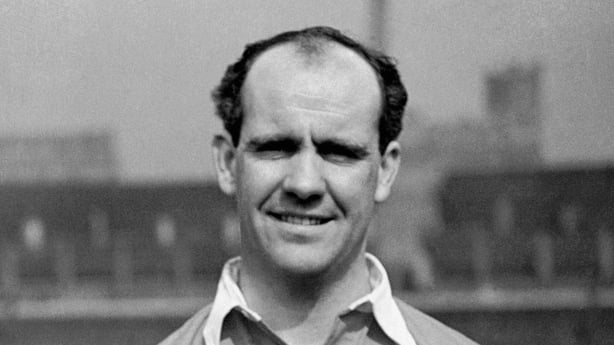
He also guested occasionally in League of Ireland games with Shamrock Rovers and played in a 3–2 defeat for a League of Ireland XI against a Scottish League XI at Dalymount Park, Dublin, on 28 April 1940. After joining the Queen’s Royal Hussars, Carey served in the Middle East and Italy from 1943, coaching army football teams and playing part time for some Italian clubs. Known as ‘Cario’, he became a great favourite with local fans and was offered professional terms to stay in Italy, but after the war he returned to England and was made captain of Manchester United in October 1945 by their new manager, Matt Busby.
Under Busby’s tutelage, he helped transform United into one of England’s top clubs, leading them in a thrilling 4–2 FA Cup final victory over Blackpool in 1948 and to their first league championship in forty-one years in 1952 (the team had been runners-up in four of the previous five seasons). He was the first Irishman to captain his club to wins in both the league championship and FA Cup.
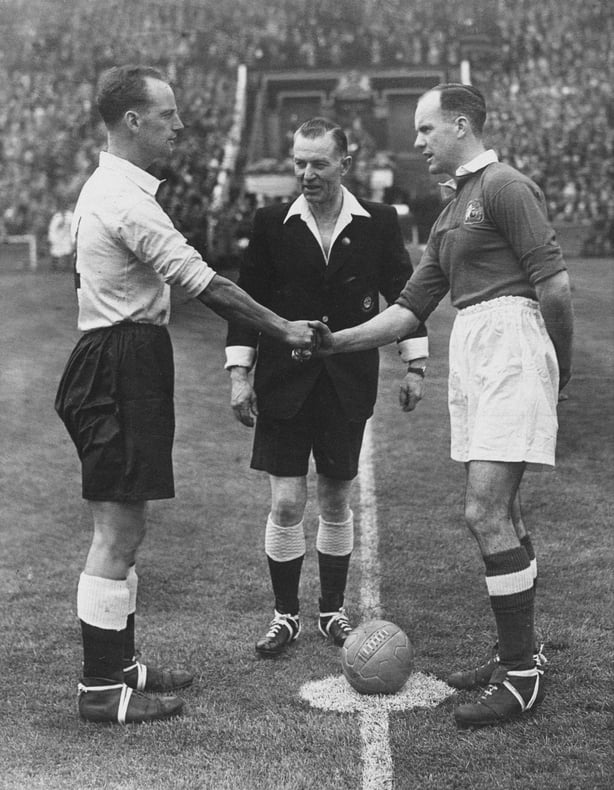
After the war he usually played at right-full-back and brought his inside-forward's footballing skills to the position. Although strongly built and a good tackler, he used brain rather than brawn: he was a master of the well-timed interception and set up counter-attacks with his passing skills. Busby regarded him as one of the greatest United players, on a par with Bobby Charlton or George Best.
Like Busby, Carey was a thoughtful, quiet-spoken man and a pipe smoker, with a passion for skilful football, but he had great presence on the pitch and was a natural leader. Sporting and dignified, he was popularly known as 'Gentleman Johnny’. He never lost his love of the Irish language and always prefaced any speeches in Ireland with a few words in Irish.
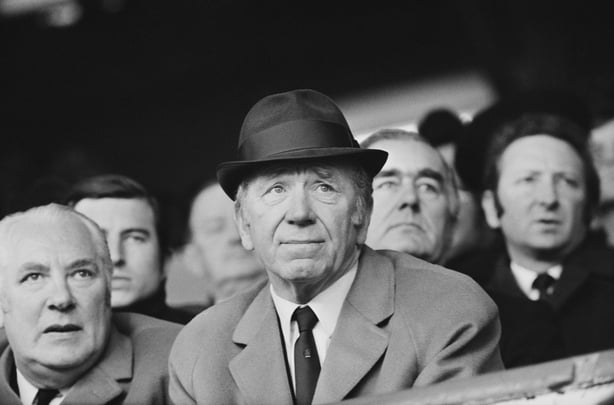
Playing for Ireland
Carey first played for Ireland (Football Association of Ireland (FAI)) in a 3–3 draw against Norway in a World Cup qualifier (7 November 1937) and was capped 29 times (1937–53), 19 as captain, scoring 3 international goals. He also played nine times for Northern Ireland (1946–9) and was one of seven southerners on the team that finished runners-up in the British home champion-ship of 1947.
During the 1948/9 season he captained both Irish international teams. On 10 May 1947 he captained a Rest of Europe team to a 6–1 defeat against Great Britain in front of 135,000 spectators at Hampden Park, Glasgow. Within the space of three days (28, 30 September 1946), he played for the two Irish national teams against England. In the second game (the first ever between England and an FAI team) Ireland were beaten 1–0 in Dublin despite Carey’s best efforts.
The English goalkeeper Frank Swift recalled that ‘Johnny Carey was ... the man of the match. He almost started the game at centre-forward, played at right-half in the first half and then went to right-back .... But no matter where he played, he just seemed to get better and better’ (Football Association of Ireland, 47).
Ireland's greatest triumph
Carey was instrumental in Ireland’s greatest footballing triumph in this period, captaining the team in a 2–0 win over England at Goodison Park, Liverpool (21 September 1949), when he effectively marked England’s star player Tom Finney out of the game. This was the first time a team from outside the UK had beaten England at home.
In 1949 Carey became the first Irish player to win the English football writers’ Footballer of the Year award, and in 1950 he was voted Britain’s sportsman of the year. Until his retirement from international football in 1953, he was Ireland’s most influential player; at times he was effectively the team coach.
Although primarily a right-full-back, Carey was a great all-round footballer: he played in every outfield position for United except outside-left, once even playing in goal against Sunderland in February 1953 when the regular goalkeeper had fallen ill; he also played in seven different positions for Ireland. When some of the ‘Busby babes’ began to break through into the United first team, he decided to retire from playing in May 1953. Despite the war, he had played 344 games and scored 18 goals for Manchester United, and his long and successful career at Old Trafford did much to make United a favourite club with Irish supporters.
Although offered a coaching position at Old Trafford, he decided to become manager of second-division Blackburn Rovers (1953–8) and guided them to the first division in 1958. He brought the same relaxed, courteous manner to managing that he had to playing; like Busby, he dispensed much fatherly advice to young players and encouraged his teams to play constructive, attacking football.
He managed Everton (1958–61) and, despite reaching fifth place in 1961 (their best post-war position to that date), he was infamously sacked in the back of a taxi. As manager of Leyton Orient (1961–3), Carey gained the club promotion to Division One for the first time in 1962, but it was relegated the following season. He moved to Nottingham Forest (1963–8) and put together an impressive team. In 1967 Forest were runners-up to Manchester United in Division One, and also reached the semi-final of the FA Cup, going down 2–1 to Tottenham Hotspur, the eventual winners.
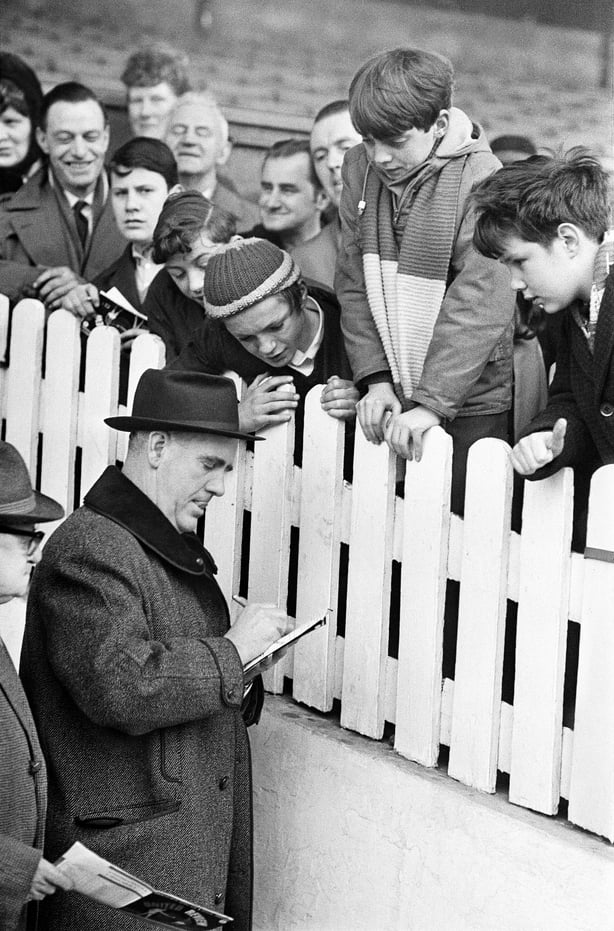
Carey also coached Ireland (FAI) (1955–67), becoming the team’s first recognised manager. (He had already taken charge of the Ireland team at the 1948 Olympic games in England, when they lost 3–1 to the Netherlands in a first-round match at Fratton Park, Portsmouth.)
On 27 November 1955 he began his reign with a 2–2 draw at home to Spain and then won his next three games, including a 3–0 victory over world champions Germany in a home friendly (25 November 1956). Other notable results were a 2–0 win against a highly fancied Czechoslovakia team in a European Nations’ Cup qualifier (5 April 1959), and a 3–2 victory over Austria (13 October 1963) to take Ireland to the quarter-finals of the same competition.
Managing Ireland
Carey managed Ireland for 45 games, winning 17, drawing 7, and losing 21. Among his greatest disappointments were elimination from a World Cup qualifying group when Ireland conceded a last-minute goal to draw 1–1 with England at Dalymount Park (19 May 1957) and going down 1–0 to Spain in Paris (10 November 1965) in a play-off for a place in the 1966 World Cup (the nearest Ireland came to qualifying for the finals of a major tournament under Carey).
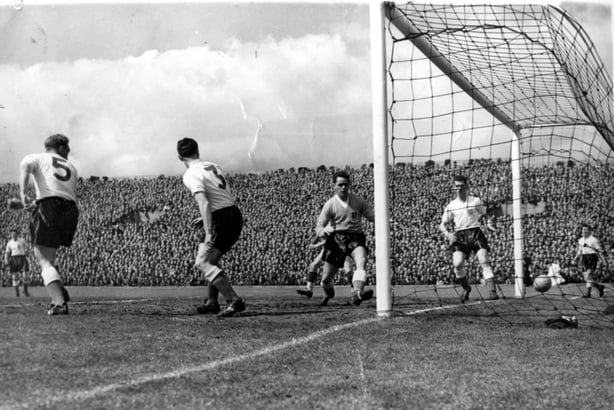
His job was not an easy one: the team was chosen by a five-man FAI committee, known for its inconsistent and occasionally bizarre selections. Players often arrived on the day of the match, leaving time for only the simplest tactical instructions. Carey was a popular and respected figure among Irish players, but some believed that he should have done more to challenge the FAI’s amateurish ways. Towards the end of his reign senior players increasingly took on the managerial role. Carey stepped down as Ireland manager in February 1967.
He returned to Blackburn as general manager (1969– 71) but was dismissed when the club was relegated to Division Three. By then he had had enough of football management and worked in the treasurer’s office of Trafford Borough Council until his retirement in 1984. He visited Old Trafford regularly, acting during the 1970s as a scout for Manchester United. He died 23 August 1995 at Macclesfield District General Hospital, Cheshire; he was survived by his wife Margaret.
Irish Sporting Lives brings to life sixty figures who in their individual ways illustrate the drama and diversity of Irish sporting history. Spanning 200 years, the biographical essays in Irish Sporting Lives incluide trailblazing women as well as serial winners and glorious losers, heroes and villains, role models and rogues, enduring legends and forgotten or overlooked greats.
Irish Sporting Lives is available now from all good bookshops and can be ordered here at www.ria.ie/isl
The sixty lives included in Irish Sporting Lives are drawn from Ireland's national biographical dictionary, the Dictionary of Irish Biography. Find out more at www.dib.ie
Sources: General Register Office Dublin (birth certificate); Stephen McGarrigle, Manchester United: the Irish connection (1990), 28–30; John Gleeson (ed.), Fyffes dictionary of Irish sporting greats (1993); The Irish Times, 24 August 1995; The Times (London), 26 August 1995; Louis McRedmond (ed.), Modern Irish lives: dictionary of 20th- century Irish biography (1996); Peter Byrne, Football Association of Ireland: 75 years (1996), 43–7; Stephen McGarrigle, The complete who’s who of Irish international football 1945–96 (1996); Sean Ryan, The boys in green: the FAI international story (1997); John Scally, Simply red and green (1998), 52–3; Jack Rollin, Soccer at war, 1939–45 (2005), 102, 104, 330; Trevor Keane, Gaffers: 50 years of Irish football managers (2010), 24–44
This entry has been abridged for publication. The full version is available at www.dib.ie.










































